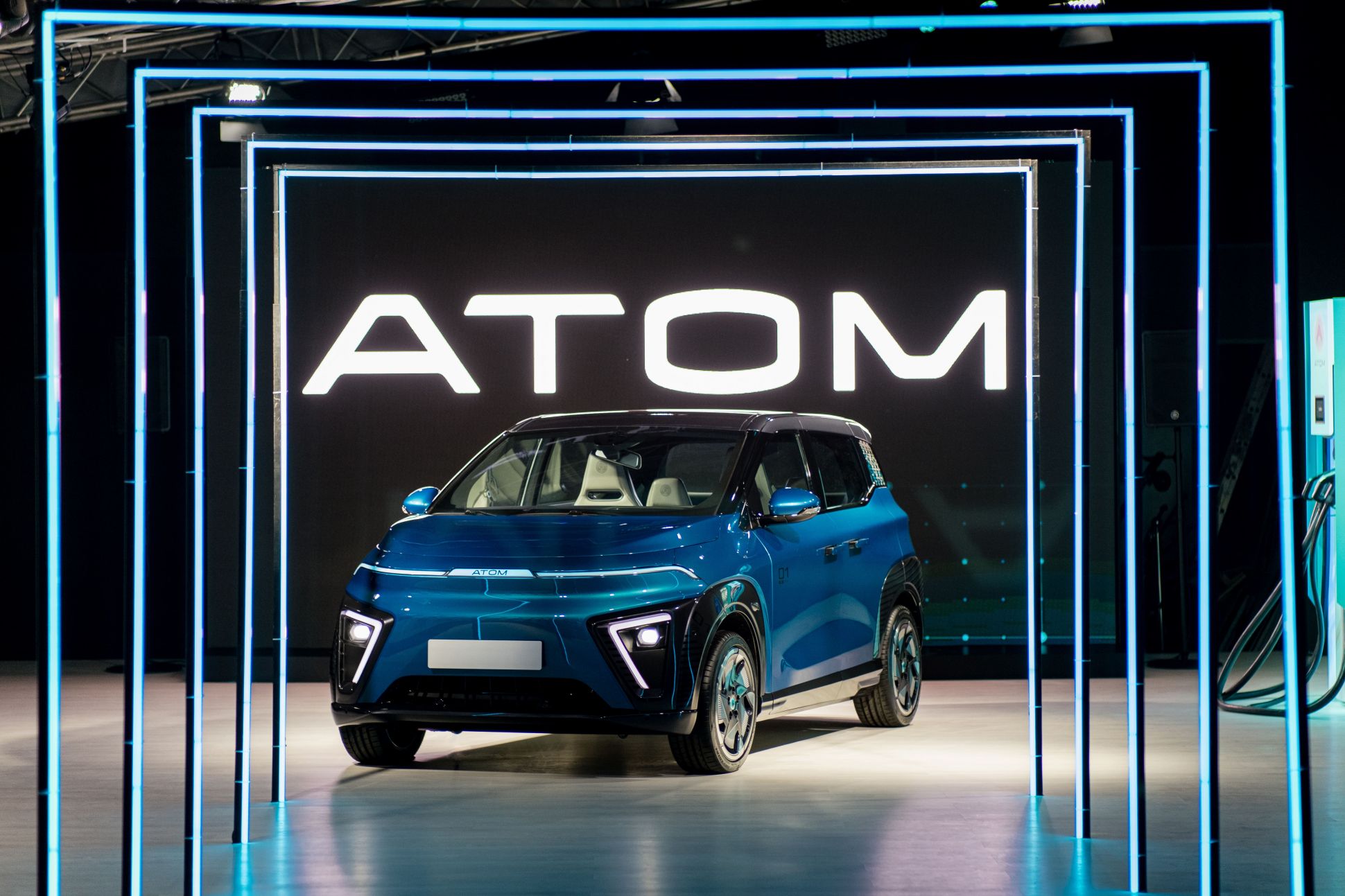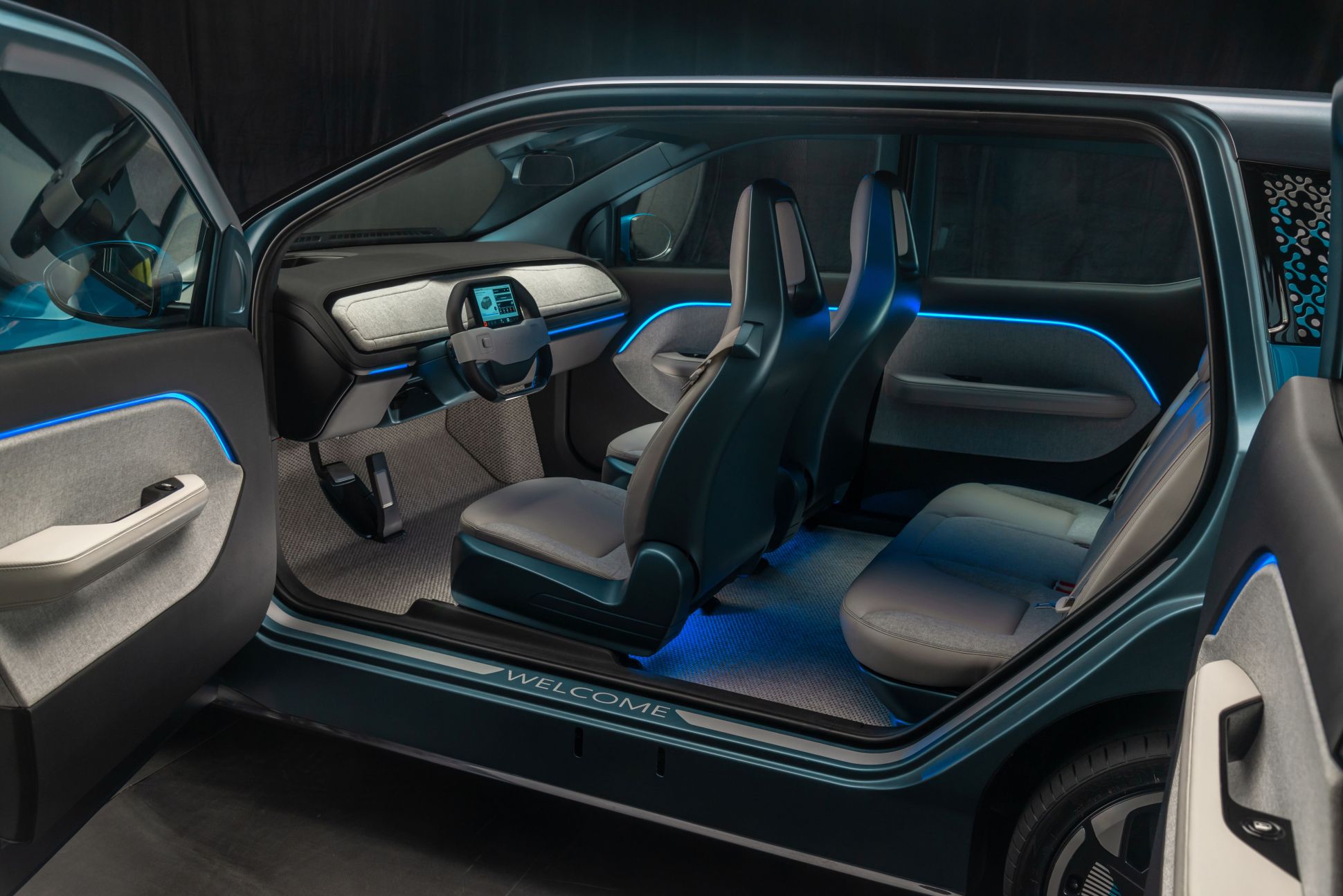Developing a Frontend for the Electric Car of the Future
The startup called ATOM is building an electric vehicle from scratch. The developers want to rethink the concept of the car, turning it from just a means of transportation into a gadget as familiar as a smartphone, smartwatch, or smart home element.
To become a part of the digital ecosystem, the future electric vehicle needs to have technical and software features that will help users get the most out of the new device.
We have already worked with ATOM's product laboratory on several hypotheses and UX research, immersing ourselves in the context. So, Evrone's team was invited to develop the central element of the Human Machine Interface — the steering panel. With its help, users will not only control the car's components but also interact with digital services.
The Task - Prepare the Driver Interface for the Prototype in a Tight Deadline
ATOM's product laboratory already had the results of research that needed to be applied to the actual "hardware," and the marketing department needed a tool for promotion, which could constantly attract attention to the brand and product. This led to the idea of creating a show car.

The first version of the future car — a prototype, a functional sample, was to appear at events, demonstrating potential capabilities and functions. Moreover, it could be used to experiment, to test the interaction of components, from understandable electric seat drives to the innovative Automotive Secure Gateway from Kaspersky for cybersecurity.
For the first presentation, ATOM chose a prestigious venue in Moscow to show it to partners and the media. There could be no postponements or overlaps, so the software and hardware parts of the car had to be assembled by a strict deadline — early May 2023.
The Solution - Develop Car Control Panel Software from Scratch in 3.5 Months
Evrone's team started developing software for the steering panel, through which the driver controls the rest of the system's components, adjusting different settings: from simple climate control to managing doors and mechanical devices.
Which Teams Worked on the Car?
The production of the physical body and the technical platform was made a separate project and went on in parallel, while several teams were formed for the software part. Some of them were responsible for engineering, in particular, the work of various lighting, door controllers, handles, etc. Another part of the team, such as the Kaspersky team, was responsible for the security module. We worked together with specialists who were creating the backend for the electric vehicle's components.
After the teams were formed, the stage of formalizing requirements for the show car began, involving Evrone's analysts, and ATOM's design team quickly drew and designed the user interface considering all inputs and handed it over for development.
Are you interested in optimizing energy consumption? We can develop a data-driven platform like Atom—contact us for a tailored solution!
Our team then divided the tasks into sprints and planned releases for quality control. Auto manufacturing, even in the prototype version, is a complex engineering process that involves the interaction of more than 10 teams and verification by a special testing team that checks these releases.
Classic testing is the verification of stated functions and usually only for software. But the quality control team checks both digital and physical parts, their compliance with specifications: from small programs for control to elements of wiring inside the car.
Experimenting with the OS
In working on the prototype, it was necessary to test the technical hypothesis and find out which operating system to use in mass production. The ATOM team had many different options, from creating their own solution to a Linux-like operating system.
During the prototype development stage, the teams had the opportunity to test different technical hypotheses, and the result of this work was the creation of their own OS and software platform Atomverse.
By using their own solution, they managed to avoid problems with licensing and certification of foreign services. In the ecosystem, there will also be an app store where third-party developers can place their services.
The First Release Already in the Middle of the Second Sprint
In our experience, the most prolonged and difficult stages to discuss are the analysis and formalization of requirements and testing of intermediate assemblies. To speed them up, we organized boot camps — coming to physical offices in several cities and solving complex issues on-site, conducting joint brainstorming sessions, or literally sitting next to each other and working. This eliminated classic interaction errors and long coordination between different departments.
We used a classic Agile methodology for planning development, but as the main metric, we chose the release issue. And already in the middle of the second sprint, we prepared the first for quality control.
This was possible because ATOM's product team quickly prepared the UX/UI. We also managed to build communication between teams so that everyone quickly reacted to changes. Such situations were only revealed during the actual interaction between the digital system and the physical components, which is why it was so important to release quickly for all parts of the electric vehicle at once.

For example, the engineering team had to adjust the operation of the backrest adjustment controllers. If there had been a classic interface in the form of a knob underneath or a physical button, there would have been no problem. But we are transferring these functions to a large touchscreen, more like a smartphone or tablet, which means conflicts arise between traditional methods. Typically, tapping the screen is processed with a delay, but our user would expect an immediate response.
Key Functions Work in Real-Time
A car is a complex and dangerous mechanism, and some key functions operate in real-time.
Ordinary applications work with a delay. An online cinema, for example, takes a pause for buffering before turning on a movie, and a banking app may ask you to wait before showing a detailed statement of your account. In a car, however, some things must happen instantly — press a button and immediately get a result.
Imagine a real situation on the road, any delay, such as a turn signal not turned on in time, can lead to an accident. The OS is not a real-time system, but we needed to achieve an immediate response, so we made several changes at the OS level and improved performance.
The Result
On May 11, 2023, the ATOM team held the first presentation of the car for the media. Afterwards, it went on a tour of forums and events and became one of the most discussed projects in recent years. After announcing pre-orders, ATOM received over 36,000 applications for the purchase of the electric vehicle.

After the presentation, we worked on the errors and we continue to collaborate. After a series of retrospectives, we understood how to better organize work between teams and which aspects of the target architecture need to be reviewed, and which worked well.
Now, together with the ATOM team, we are working on the stage in car manufacturing called "Sample A". To draw an analogy with smartphone manufacturing, this is the stage when everything looks like a disassembled constructor of components connected by wires. This finalizes the selection of components and the interaction of different parts with each other.